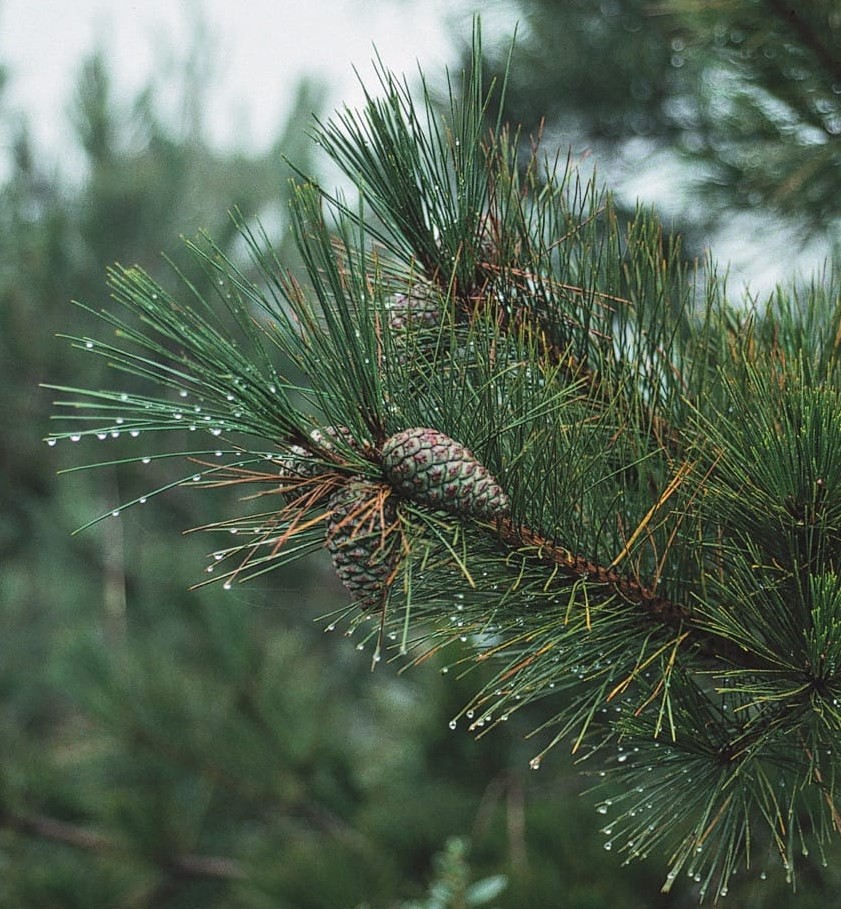Pinus taiwanensis
Credits
Article from New Trees by John Grimshaw & Ross Bayton
Recommended citation
'Pinus taiwanensis' from the website Trees and Shrubs Online (treesandshrubsonline.
Genus
- Pinus
- Subgen. Pinus, Sect. Pinus
Common Names
- Taiwan Black Pine
Other taxa in genus
- Pinus albicaulis
- Pinus arizonica
- Pinus armandii
- Pinus attenuata
- Pinus ayacahuite
- Pinus balfouriana
- Pinus banksiana
- Pinus bhutanica
- Pinus brutia
- Pinus bungeana
- Pinus canariensis
- Pinus cembra
- Pinus cembroides
- Pinus chiapensis
- Pinus contorta
- Pinus coulteri
- Pinus culminicola
- Pinus densata
- Pinus densiflora
- Pinus devoniana
- Pinus durangensis
- Pinus echinata
- Pinus edulis
- Pinus elliottii
- Pinus engelmannii
- Pinus eremitana
- Pinus flexilis
- Pinus gerardiana
- Pinus greggii
- Pinus × hakkodensis
- Pinus halepensis
- Pinus hartwegii
- Pinus heldreichii
- Pinus henryi
- Pinus × holfordiana
- Pinus hwangshanensis
- Pinus jeffreyi
- Pinus johannis
- Pinus koraiensis
- Pinus lambertiana
- Pinus leiophylla
- Pinus longaeva
- Pinus massoniana
- Pinus maximartinezii
- Pinus monophylla
- Pinus montezumae
- Pinus monticola
- Pinus morrisonicola
- Pinus mugo
- Pinus muricata
- Pinus nelsonii
- Pinus nigra
- Pinus oocarpa
- Pinus orizabensis
- Pinus palustris
- Pinus parviflora
- Pinus patula
- Pinus peuce
- Pinus pinaster
- Pinus pinceana
- Pinus pinea
- Pinus ponderosa
- Pinus pseudostrobus
- Pinus pumila
- Pinus pungens
- Pinus quadrifolia
- Pinus radiata
- Pinus remota
- Pinus resinosa
- Pinus rigida
- Pinus roxburghii
- Pinus sabiniana
- Pinus serotina
- Pinus sibirica
- Pinus strobiformis
- Pinus strobus
- Pinus sylvestris
- Pinus tabuliformis
- Pinus taeda
- Pinus teocote
- Pinus thunbergii
- Pinus torreyana
- Pinus virginiana
- Pinus wallichiana
- Pinus wangii
- Pinus yunnanensis
Tree to 35 m, trunk straight, erect, to 1 m dbh. Bark rough, greyish brown to dark grey, breaking into plates separated by deep, longitudinal fissures. Crown open, ovoid to rounded, branches starting low on the trunk. Branchlets greenish brown, slender; vegetative buds not or slightly resinous. Leaves in fascicles of two, rigid, very thin, sometimes slightly twisted, semicircular in cross-section, 4.5–17 × 0.06–0.1 cm, margins serrulate, apex acute. Fascicle sheaths 0.5–1.4 cm long, persistent. Cataphylls reddish brown, 0.5 cm long, deciduous. Male strobili reddish or yellowish brown, 1–2 × 0.3–0.4 cm. Female cones subterminal, 3–6 × 3–5 cm, light chocolate-brown, mature cones ovoid or ovoid-conical, mature in about 20 months, persistent. Scales 1.8 × 0.8–1 cm; apophysis flat, slightly wrinkled; umbo dorsal, sometimes with a deciduous prickle. Seeds ellipsoid to ovoid; wings 1–1.4 × 0.5–0.6 cm. Li & Keng 1994a, Fu et al. 1999c, Farjon 2005a. Distribution TAIWAN. Habitat Montane forests inland and on the coast, between 750 and 2800 m asl. USDA Hardiness Zone 8. Conservation status Lower Risk. Illustration Farjon 2005a; NT625. Cross-references S375, K245.
According to Mitchell (1972), Pinus taiwanensis was introduced to the British Isles in about 1930 and maintained a slim presence in cultivation thereafter, particularly at Borde Hill, West Sussex, where several were planted. Several recent expeditions have brought it back from Taiwan, notably groups from Kew in 1992 (ETOT 29, 155) and Edinburgh in 1993 (ETE 15, 64, 192). From these and other collections it is well established in cultivation, and it is currently available commercially both in the United States and in the United Kingdom. It seems to grow well in the British Isles, though it can sometimes be rather spindly (Flanagan & Kirkham 2005). At Wakehurst Place a tree from ETOT 29 was 6 m tall in 2005, while at Howick an ETOT 155 sapling was 4 m tall. In the wild it grows in rich mixed forests, but the ETOT collection notes mention that in Nantou Co. at least, where both these gatherings were made, it grows in very freely draining sites with little humus in the soil.
Pinus luchuensis Mayr is the Japanese representative of a group of closely related taxa that includes P. hwangshanensis as well as P. taiwanensis. It comes from low altitudes in the Ryukyu Islands, including Okinawa, and is likely to be tender in most of our area; it is, however, in cultivation at Berkeley.

